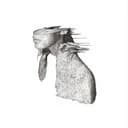The C♯ major scale follows the major scale pattern using seven sharps: C♯ to D♯ (whole step), D♯ to E♯ (whole step), E♯ to F♯ (half step), F♯ to G♯ (whole step), G♯ to A♯ (whole step), A♯ to B♯ (whole step), and B♯ to C♯ (half step). This represents the maximum number of sharps possible in a major key signature, including the rarely-encountered notes E♯ (sounding like F) and B♯ (sounding like C). While theoretically valid and acoustically identical to D♭ major, the seven-sharp notation makes C♯ major extremely challenging to read and write, explaining why composers almost universally choose the simpler five-flat spelling of D♭ major.
Why D♭ Major is Universally Preferred
The choice between C♯ major and D♭ major illustrates a fundamental principle in music notation: readability matters. While both scales sound identical, reading seven sharps (including E♯ and B♯) is significantly more difficult than reading five flats. Musicians encountering C♯ major must constantly process unusual accidentals like B♯ and E♯, which appear rarely in musical notation and require extra mental translation. D♭ major's five-flat notation uses standard accidentals that musicians encounter regularly, making it far more practical for composition, performance, and sight-reading. This pragmatic preference demonstrates how music notation evolved to serve performers and composers, not just theoretical completeness.
Theoretical Value and Academic Study
Despite its impracticality, understanding C♯ major serves important academic and theoretical purposes. It completes the theoretical cycle of sharp-based keys and demonstrates enharmonic relationships in their most extreme form. Music theory students benefit from studying C♯ major to understand how key signatures work at their theoretical limits and to grasp why enharmonic equivalents exist. The scale also helps clarify circle of fifths relationships and demonstrates why Western music theory developed the concept of enharmonic spelling. Advanced musicians who understand C♯ major alongside D♭ major gain deeper insight into notation choices and the practical considerations that guide compositional decisions.
In practical music-making, if you encounter a piece theoretically in C♯ major, you would almost certainly either see it notated as D♭ major or mentally transpose it to D♭ major for easier reading. The scale serves primarily as a theoretical construct that helps complete our understanding of Western music's key signature system. Studying C♯ major reinforces the importance of choosing appropriate enharmonic spellings and appreciating how notation serves the practical needs of musicians while maintaining theoretical consistency.





